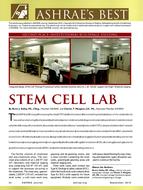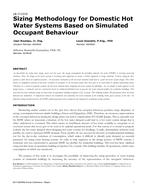Increasing occurrences of record high temperatures, hot spells, and deadly heat waves in recent years have warranted a growing global concern with overheating in buildings. This paper demonstrates how two proposed measurements designed to quantify overheating exposure duration, an important aspect of thermal health that has not been addressed by the existing overheating risk assessment approaches, can be used to inform the selection of retrofitting options in places with continental climates such as Chicago where both the cooling and heating seasons are challenging. The two measurements — consecutive hours of exceedance (CHE) and cumulative degree exceedance of continuous exposure (CDECE), allow an assessment based on continuously overheated intervals (COI) that more appropriately capture the state of overheating as relevant to the occupants’ thermal health than does aggregated assessment which is easily influenced by how thresholds and occupancy schedule are defined. In the context of a typical pre-1942 single-story uninsulated timber-frame Chicago bungalow, as simulated in this study, although wall insulation is found to be more effective than roof insulation in the winter, there is little difference in the overheating risk reduction potential of the two in the summer. However, when wall insulation is applied in tandem with roof insulation, thermal performance is improved in both seasons. Further analysis is needed to investigate the energy and cost savings of these upgrades. More broadly, given further epidemiological understanding of heat-related morbidity and mortality, CHE and CDECE may aid in the identification of potentially health-threatening building stocks within a city or region, and in the selection of appropriate retrofitting options to reduce heat-related health risks in buildings.
Citation: ASHRAE Conference Papers, Denver, CO
Product Details
- Published:
- 2013
- Number of Pages:
- 8
- File Size:
- 1 file , 2.7 MB
- Product Code(s):
- D-DE-13-C001


